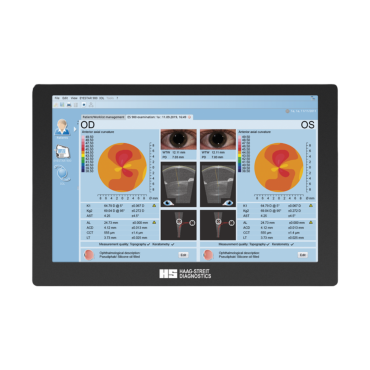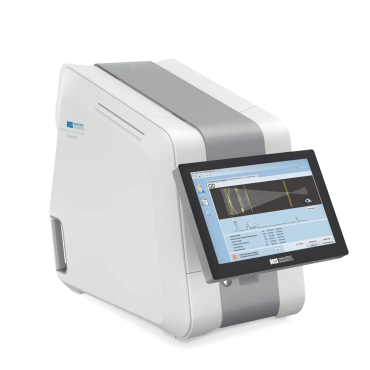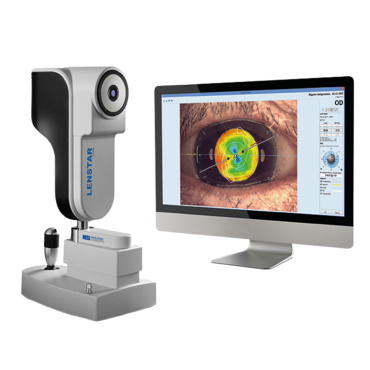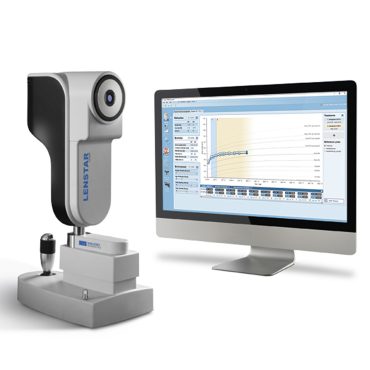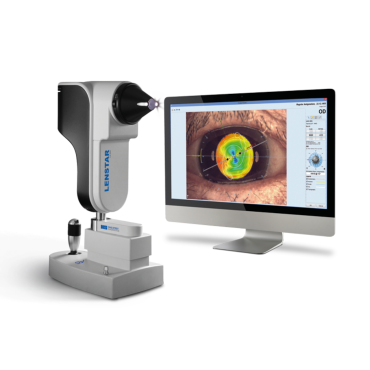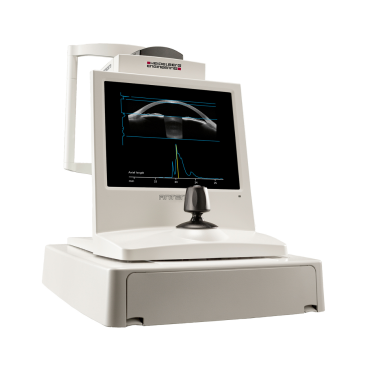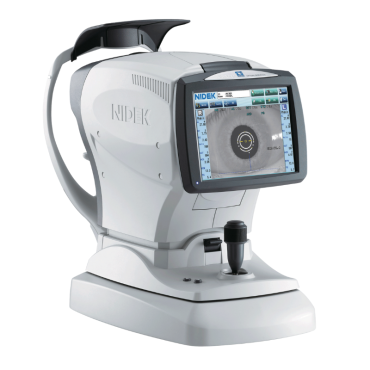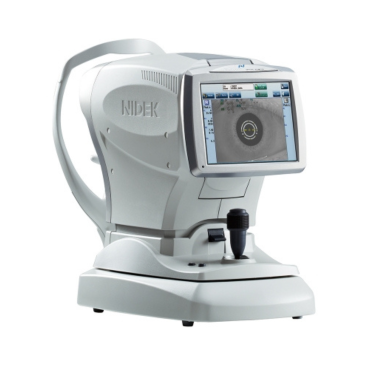With the Eyestar 900, Haag-Streit is opening a new chapter in measuring, imaging and diagnosing the human eye with the introduction of a complete swept-source OCT-based eye analyser. The Eyestar 900 features swept-source technology, enabling precise measurement, as well as topographic assessment of the front and back corneal surface and the anterior chamber, including the lens, as well as imaging of all these structures. It also includes cornea-to-retina biometry of the entire eye.
FEATURES
- Swept-source OCT for greater safety — Imaging of the entire anterior chamber, including the crystalline lens, allows the user to easily verify any measurement and to identify anatomical anomalies that may interfere with planned surgical procedures. Topographic maps of the anterior and posterior cornea and pachymetry maps enable users to improve their surgical plan and review patients’ suitability for specific interventions, such as toric- or multifocal IOL.
- Tear film independent topography — Eyestar 900 provides corneal topography in compliance with Class A topographer standards. The maps of the cataract suite cover 7.5 mm in diameter and provide comprehensive information of the front as well as the back of the cornea and pachymetry. More detailed data and analysis will be part of the soon-to-be-released anterior chamber suite.
- Fully automated measurement for efficient workflow — The fully automated measurement process enables the user to reliably acquire precise measurement and swept-source OCT imaging data of both eyes in less than 40 seconds.
- Easy-to-delegate — In busy practices it is important to allocate resources efficiently and purposefully. Eyestar 900 workflow optimised automation frees up the eye care specialists time for diagnosis and planning.
- Patient compliance and efficacy — Patients, especially elder patients, tend to tire quickly during an eye exam, impairing optimal data collection. The fully automated data acquisition process, and its fast measurement with simultaneous data recording, lead to excellent patient comfort and thus improve cooperation, which has a positive effect on the measurement quality.
